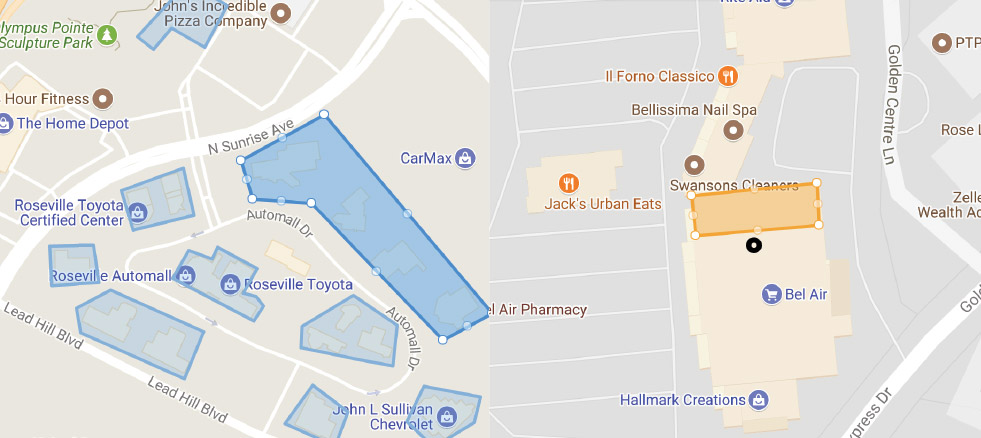
Digital marketing is more complex today than ever before. In the past, digital was a channel that followed and supplemented more traditional sources of media such as email and direct mail for both in-home and out-of-home advertising. Today, the key is the ability to put an ad in the right place, in front of the right person, at the right time, on the right device, with the right message, offer, or solution. It sounds complicated because it is!
Search advertising, contextual audience advertising and channel targeting offer today’s businesses the opportunity to precisely define their ideal prospective B2B or B2C customer or client. By adding Geotargeting and Geofencing to the marketing mix, we can get even more concentrated with our approach.
Geofencing vs. Geotargeting

There are subtle but defined differences between geotargeting and geofencing in digital advertising. Geotargeting provides the ability to target based on broad parameters such as cities or zip codes. Geofencing uses a Global Positioning System (GPS) to build virtual boundaries around specific locations and the technology behind it is advancing quickly. As recently as 4 years ago, you would have needed a beacon located on a specific location in order to use Geofencing. Along with the beacon, your potential customers would also have needed to have apps on their mobile devices that would allow them to receive your ad. But now you can use Geofencing to reach anyone within a geographic range without any beacons or apps. Once a customer is within the parameters that you’ve set, the mobile device ID is identified and tagged and a Real-Time Bidding process occurs which provides the chance that they will see your ad while using their mobile devices in-app or in-browser to surf the Web. The name, phone number, or any other personal data is not passed through this channel. It is strictly enabled by the physical location of the mobile device.
When Geofencing makes sense
In determining whether to pursue a Geofencing campaign, it makes sense to first ask two questions:
- Is the location in a high-traffic area? The higher the volume of traffic the more likely your ad will be viewed by a wider audience.
- Are there multiple locations of a business? A campaign can be more effective if there are multiple locations of the same business or of related types of business (e.g., an auto repair facility and a retail auto parts store).
Through Geofencing campaigns, we serve up ads to potential customers in mobile apps as well as mobile web browsers as long as the user is within relatively close proximity to the primary or competitive business. We can even target specific buildings in urban, rural, or retail areas. If the customer clicks to a landing page, we are then afforded the opportunity to retarget to them through social media channels such as Facebook and Instagram. The goal here is to provide brand awareness to the right demographic of people at a highly Geotargeted level. This closes the loop on the digital media ecosystem between email, display, search, and mobile.
Conversion zones can be set to report actual in location conversions making marketing attribution much easier. If an end-user clicks an ad in a geofenced campaign, they are then entered into a retargeting list which continues the conversation during the buyer journey and helps to shorten the path to conversion.
When Geotargeting makes sense

We often do keyword research to determine product or business category interest. If we know that we have the opportunity to draw from a specific zip code or town, we may run a Geotargeted campaign for prospecting. In this case, it makes more sense to set parameters beyond just geography. As an example, targeting potential teenage customers between a defined adult age range who live in a certain area with a specific level of median household income, and who have online behaviors that support their position as a prospect, may produce better results.
How to make sense of it all
Geotargeting and Geofencing are becoming a standard process in B2B and B2C marketing. There are solutions on the market that help manage cookie-free IP targeting as well as data-rich Geofencing campaigns. The research that’s required is not for the faint of heart. DMS can work with you to understand parameters like base limit of investment, match rates, and your CPM (cost per thousand impressions) for your campaign prior to launch.
As we mentioned earlier, this all sounds complicated because it is! At DMS, we’re your go-to resource to make you smarter with your approach to a local marketing strategy!
Contact Us for More Information!

